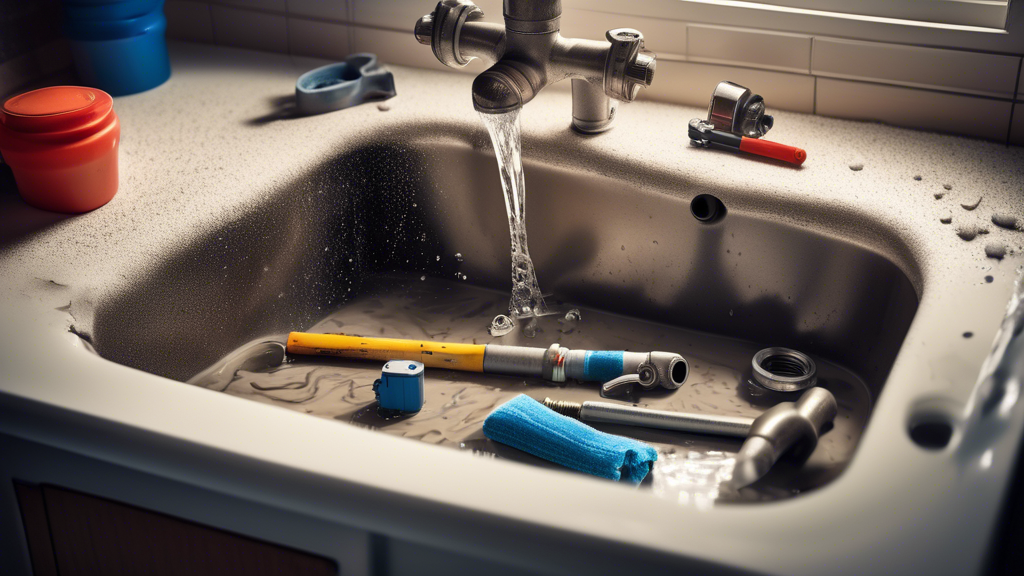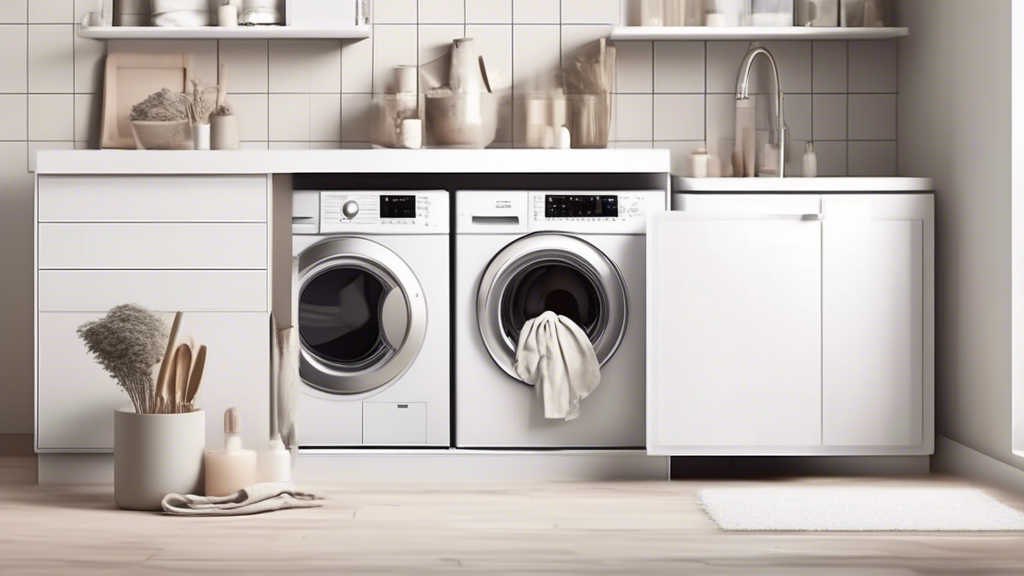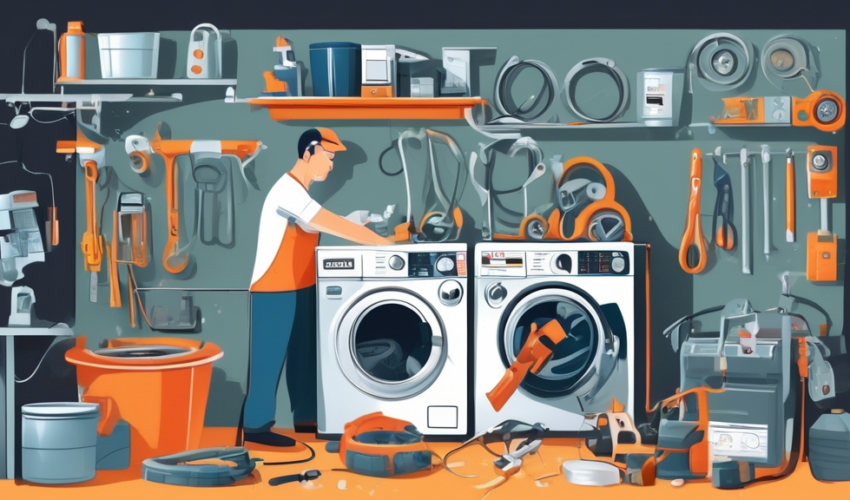In today’s fast-paced world, a functioning washing machine is more than just a convenience; it’s a vital appliance that simplifies our daily lives. Understanding the intricacies of washing machine repair can save you time, money, and frustration when unexpected problems arise. Whether you’re facing issues like a leaking washer, a machine that refuses to spin, or strange sounds disrupting the laundry routine, being equipped with basic troubleshooting knowledge is essential. In this comprehensive guide, we will delve into the most common washing machine problems, offering practical tips and solutions you can employ before deciding to call in the professionals. For those wondering when to tackle repairs on your own or when to seek expert help, this resource will clarify your options and empower you to take control of your home maintenance. Join us as we explore the essentials of washing machine repair and help extend the life of this critical appliance in your household.
Introduction to Washing Machine Repair
Understanding washing machine repair is an essential skill for every homeowner or renter. When a washing machine malfunctions, it can disrupt daily routines and lead to unnecessary frustration. This is why it’s crucial to have a basic knowledge of potential issues and remedies. Knowing how to address common problems can save both time and money, allowing you to resolve minor issues before they escalate into major repairs.
Washing machines, like any appliance, encounter typical problems over time. Some common issues include leaks, failure to spin or agitate, and unusual noises. Familiarizing yourself with these issues can empower you to troubleshoot effectively. Moreover, many users find themselves relying on repair professionals for relatively simple problems that could be resolved with the right information. Understanding when to attempt a DIY repair and when to consult a professional can be pivotal in ensuring the longevity and functionality of your appliance.
Recognizing common problems is the first step toward effective washing machine repair. For instance, a leaking machine may be due to loose hoses or an aging door seal. Addressing these issues promptly can prevent water damage and more significant repairs. Similarly, if your machine isn’t spinning or agitating, it might be related to the drive belt or a door latch issue. Many issues can be diagnosed with simple checks, providing you with a clearer picture of what repairs may be necessary.
Ultimately, understanding the basics of washing machine repair equips you with the knowledge needed to maintain your appliance effectively. Armed with this information, you can avoid unnecessary repair costs and unnecessary appliance downtime. Moreover, knowing the indicators of complex issues can help in making informed decisions about when to enlist the help of a professional technician skilled in washing machine repair. This understanding not only empowers you but also prepares you for the most typical scenarios you may face as a washing machine owner.

Common Problems and Troubleshooting Tips
Leaking Water: Causes and Solutions for Water Leaks
Experiencing a leak from your washing machine can be a stressful issue, but identifying the source is the first step towards remedying the situation. Common causes of water leaks include worn hoses, poor connections, and malfunctioning seals.
Start by examining the hoses that supply water to your machine. Look for any signs of wear, such as cracks or bulges, and ensure that the connections to both the machine and the wall are secure and not loose. A leaky hose is often the culprit and can be easily replaced.
Another area to check is the door seal, which is crucial for preventing water from escaping during a wash cycle. Inspect the seal for any tears or debris that may prevent it from closing properly. Cleaning the seal with a damp cloth can remove any buildup, while any significant damage may require a seal replacement.
If you notice that your washing machine is leaking only during certain cycles, this could indicate a problem with the water level switch or a clogged drain. Inspecting these components can lead you to the resolution and ultimately prevent further leaks.
Not Spinning or Agitating: Diagnosing the Issue
If your washing machine is not spinning or agitating, it can be frustrating to figure out the underlying issue. Start by checking the drive belt, which can wear out or become loose over time. Disconnect the machine from the power supply, access the back panel, and inspect the belt for signs of damage.
Additionally, assess the motor itself. If you hear humming sounds but the agitation isn’t occurring, the motor may have malfunctioned and could require replacement. It’s also beneficial to ensure that the load inside the machine is balanced; unevenly distributed laundry can prevent proper spinning. Always check the door latch, too, as a malfunction there can trigger safety mechanisms that stop the cycle from proceeding.
Unusual Noises: Identifying Sound-Related Problems
If your washing machine is making strange noises, it can indicate potential issues that need to be addressed promptly. Common sounds include banging, squeaking, or grinding. A banging noise typically arises from an unbalanced load or loose parts inside the drum. Rearranging clothes to ensure an even distribution can often resolve this quirk.
Squeaking sounds might suggest that the belt is worn out and in need of replacement. Alternatively, grinding noises could indicate that foreign objects, such as coins or buttons, have become lodged in the drum or drain filter. Inspecting and removing these items can often clarify the source of the noise.
Regular maintenance can prevent many of these issues from occurring in the first place. Keeping your washing machine clean and adequately maintained helps ensure its longevity and performance. If addressing these noise-related problems doesn’t yield a resolution, it may warrant a more in-depth examination of internal components, which may require professional assistance.

Maintenance Tips for Preventing Washing Machine Issues
Regular maintenance is key to ensuring the longevity and efficiency of your washing machine. By incorporating routine cleaning and adhering to proper usage guidelines, you can significantly reduce the risk of expensive repairs while enhancing the machine’s performance. Below are essential tips to help you maintain your washing machine effectively.
Regular Cleaning and Maintenance Routines
Cleaning your washing machine might seem like a hassle, but it’s an essential step that can prevent various issues down the line. Here are a few areas that require regular attention:
- Cleaning the Drum: Over time, detergent residue, fabric softener, and lint can accumulate in the drum, creating odors and even leading to mold growth. To clean it, run a hot water cycle with two cups of white vinegar or a specialized washing machine cleaner. This will help break down the buildup and eliminate unpleasant smells.
- Cleaning the Detergent Drawer: The detergent drawer can be a breeding ground for mold if not cleaned regularly. Remove the drawer and soak it in warm, soapy water to remove buildup. Use an old toothbrush to scrub away any stubborn residue, ensuring that all compartments are clean and clear for optimal detergent flow.
- Cleaning the Filter: Many washing machines come equipped with a filter designed to catch lint and debris. This filter can become clogged over time, affecting the machine’s performance. Refer to your washing machine’s manual to locate the filter and clean it every few months to ensure proper water drainage and overall efficiency.
Proper Usage Guidelines to Extend Washing Machine Life
Usage plays a significant role in both the performance and lifespan of your washing machine. Here are some best practices to follow:
- Load Limits: Avoid overloading your washing machine, as it can strain the motor and lead to mechanical failures. Always refer to your machine’s manual to understand the weight limits and how to distribute clothes evenly within the drum for optimal washing and spinning processes.
- Suitable Detergents: Not all detergents are created equal. Use high-efficiency (HE) detergents in front-loading and some top-loading washers. Using the wrong type of detergent can result in excess suds, leaving residue in the machine and potentially causing blockages and malfunctions.
- Care Labels: Always check the care labels on your garments to ensure that you are washing them according to their specific instructions. Washing items that shouldn’t be mixed or using incorrect cycles can lead to machine strain and fabric damage.
Resources for Further Assistance
As you maintain your washing machine, having the right tools and resources on hand will make the process easier and more effective.
- Recommended Tools for DIY Repairs: Invest in a few essential tools, such as a screwdriver set, pliers, a multimeter, and a wrench set. These tools will be useful for troubleshooting and carrying out minor repairs or replacements on parts like the drive belt or motor. Additionally, having a soft cloth and cleaning supplies on hand will make routine cleaning more effective.
- Reliable Repair Services: If you encounter issues beyond your competency or troubleshooting leads to no resolution, knowing when to call for professional help is crucial. Look for certified appliance repair technicians in your area with positive customer reviews and recommendations. Checking online platforms can help you find qualified professionals who specialize in washing machine repair.
By implementing these maintenance tips and adhering to best practices for usage, you can safeguard your washing machine against common issues that necessitate costly repairs. Prioritizing regular cleaning, using suitable detergents, and understanding load limits will not only prolong your machine’s lifespan but also enhance its efficiency, making laundry day smoother and more productive.
In conclusion, understanding the fundamentals of washing machine repair can not only save you time and money but also empower you as a homeowner or appliance user. By familiarizing yourself with common issues such as leaks, malfunctioning spins, and unusual noises, you become better equipped to troubleshoot these problems before they escalate. The importance of regular maintenance cannot be overstated; implementing proper cleaning routines and adhering to usage guidelines will significantly extend the lifespan of your appliance.
For the DIY enthusiast, this guide has provided practical tips as well as insights on when it may be more prudent to seek professional assistance. Repairing a washing machine can be a straightforward process, provided you have the right resources and a willingness to learn. Remember, while some issues are easily remedied with a bit of elbow grease and patience, more complicated problems can warrant the expertise of a qualified technician.
As you navigate the world of washing machine repair, keep in mind the value of being proactive. Regular inspections and immediate action upon noticing symptoms of malfunction will not only keep your washing machine running efficiently but will also save you from potential financial burdens in the long run. Equip yourself with the necessary tools and knowledge and be prepared to extend the life of one of the most essential appliances in your home. By adhering to the guidelines provided in this article, you are well on your way toward becoming a more informed and capable appliance owner, ensuring that your washing machine serves you reliably for years to come.

